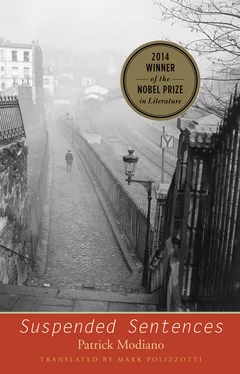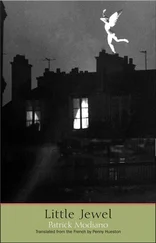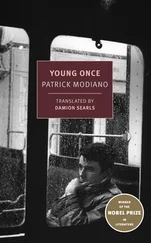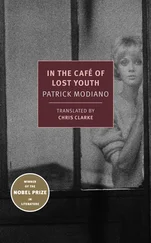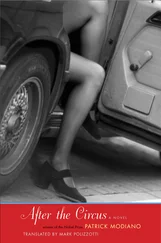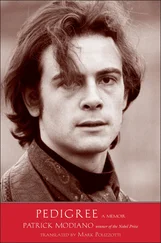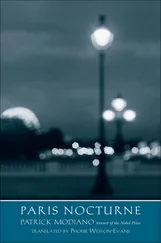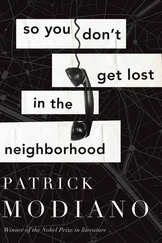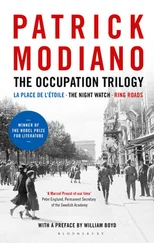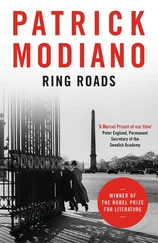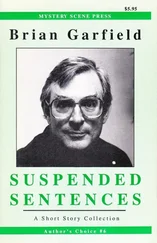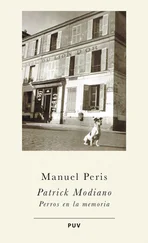“A Hindu princess,” my father had said.
In what boarding school had they enrolled young Philippe Riclos y Perez de Pacheco? Who were his friends in 1938, when he was twenty? What profession was he destined for? I imagined him being left to his own devices. The war and the Occupation had finished sowing disorder and confusion in a young man with a highly indecisive personality. He must not even have been very sure of his identity, since he called himself Philippe de Bellune at the time, as if trying to cling to the only reference marker he had in life, and a very distant one at that: his ancestor, Maréchal Victor, the duc de Bellune.
No doubt he had fallen in with bad company. The article from 1946 specifies that a warrant had been issued against him and several others, including a “countess” von Seckendorff and a “baron” de Kermanor. Were those noble titles as authentic as Philippe de Bellune’s? The list published in the newspaper from 1948 again contained their three names.
Proceedings brought by the Chief Inspector, Crimes of Collaboration, against:
1) Lebobe, André, born October 6, 1917, Paris 14. Broker. 22 Rue Washington.
2) Sherrer, Alfred, alias “The Admiral,” born March 26, 1915, Hanoi (Indochina). No known address.
3) Philippe de Bellune, born Paris, January 22, 1918, son of Mario Riclos y Perez de Pacheco and Eliane Werry de Hults, no known address.
4) Bremont, Roger, born February 24, 1910, Paris, alias “Roger Breugnot,” no known address.
5) Yevremovitch, Miodraf, alias “Draga,” born March 23, 1911, Valjevo (Yugoslavia), formerly of 2 Square des Aliscamps, Paris 16, no known current address.
6) Ruiz, José, alias “Vincent,” alias “Vincent Vriarte,” born April 26, 1917, Sestao (Spain), no known address.
7) Galleran, Héloïse, wife of Pelaez, born April 24, 1914, Luanco (Spain), no known current address.
8) de Reith, Hildegarde-Jeanne-Caroline, wife of von Seckendorff, born February 18, 1907, Mayen (Germany), formerly of 41 Avenue Foch, Paris, no known current address.
9) Léger, Yves, 14 Rue des Dardanelles, last known address.
10) Watchmann, Johannes, 76 Avenue des Champs-Elysées, last known address.
11) Fercrou, 1 Rue Lord-Byron, last known address.
12) Cremer, Edmond, alias “Piquet,” alias “baron de Kermanor,” born October 31, 1905, Brussels. 10 Rue Berteaux-Dumas (Neuilly), last known address.
For failure to appear at the hearing of November 3, 1947.
Nor had any of them had shown up for the hearing on February 25, 1948, as ordered by the presiding judge for the Court of the Seine Department. They had disappeared for good.
Had Philippe de Bellune really been interned at Dachau? And on his return to Paris, where had he hidden out to evade the law that was calling him to account? I imagined him slipping at night into the little apartment on Rue du Dôme where the comtesse de Hults Bellune, alias Mme de Pacheco — his mother — took him in in secret, for she must have stated to the detectives that her son was indeed dead.
Often, as a precaution, mother and son arranged to meet not in the apartment but in neighborhood cafés — Place Victor-Hugo, Avenue de la Grande-Armée … One evening, they had gone together to the pawnshop on Rue Pierre-Charron to split the earnings from the last valuable piece of jewelry she could hock. Then they had walked up the Champs-Elysées. It was a winter evening in 1948, the day when the second wanted notice had been issued, proof that the law was still skeptical about Philippe de Bellune’s death … She had left him at the George-V metro stop, where he had melted into the rush-hour crowds.
Twenty years had gone by. And now, on the great lawn, Pacheco was showing us his photos of Morocco, like a tourist back from holiday. Perhaps he would invite us later on to see some slides in his room at the Pavillon des Provinces Françaises. Or perhaps I was the one harboring false ideas about him, after all. That evening, we ended up gathering around one of the cafeteria tables and I remember that one of the Moroccans and his Swedish girlfriend had danced to music from a transistor radio. Pacheco had danced, too. He was wearing a navy blue polo shirt, sunglasses, and his very close-cropped hair made him look even younger. I ended up doubting that this man could have been born on January 22, 1918.
The following week, Jacqueline and I were alone with Pacheco in one of the cafés opposite the Charléty stadium. His black leather suitcase was beside him.
“Would you do me a favor?” he asked.
He knew Jacqueline had a room on Boulevard Kellermann. Could he ask her to hold onto his suitcase for a few days? He had to take another trip for work and he didn’t want to leave it in his room at the Pavillon des Provinces Françaises, as the door didn’t lock: there were just some clothes and personal effects in the suitcase, of no value except to him.
He walked us to the building on Boulevard Kellermann, but he didn’t want to come up. In the courtyard, he handed me the suitcase.
“They’re sending me to Morocco again … But I’ll be back next week … I’ll send you a postcard.”
He remained standing in the middle of the courtyard. I sensed he wanted to tell me something but he couldn’t make up his mind. I had his suitcase in my hand. He stared at me fixedly with his vacant eyes.
“Can you do me another favor?”
He handed me a large brown envelope.
“These are my enrollment forms for the science faculty this year. They need to be delivered by hand to the Halle aux Vins campus before the end of the week.”
“You can count on us,” I said.
He shook our hands. Once again he raised his eyes to me. He turned his back on us suddenly, after giving a vague wave of goodbye. I watched him cross the boulevard and follow the wall of the SNECMA plant toward the Parc Montsouris.
Days passed, then months, without a word from him. He didn’t send us a postcard from Morocco as he’d promised. We stashed the valise in the closet of the room on Boulevard Kellermann. The enrollment forms for the Faculty of Sciences that he’d asked me to deliver were just an application to audit some classes. And that application was made out in the name of Philippe de Pacheco. Our friends at the Cité Universitaire didn’t seem surprised by his absence: he’ll be back someday, he’ll bring us cartons of American cigarettes … But they spoke of him with increasing indifference, as if about one of those hundreds of residents that you run into now and then in the halls, and that you might find yourself sitting with, by chance, at a table in the cafeteria.
One evening, I decided to open the suitcase. At a sidewalk table of the Café Babel at the edge of the Parc Montsouris, I had just run into the tall, dark fellow who worked for Air Maroc. I had asked if he had any news of Pacheco.
“I don’t think he’s ever coming back. He’s going to stay in Casablanca for good.”
“Do you have his address?”
“No.”
I was sure that wasn’t true. He knew much more than he wanted to let on.
“So, he’s decided to stay?”
“Yes.”
Back in our room, I took the black leather suitcase out of the closet. It was locked, but I jimmied it open with a knife.
Not much in the suitcase: The faded overcoat that the tramp I’d seen around the Cité Universitaire had worn that winter, two years ago. A pair of black corduroy trousers. In one of the coat pockets I found a very worn alligator-skin wallet, whose contents I emptied onto the kitchen table.
A ten-year-old identity card in the name of Philippe de Pacheco, born January 22, 1918. The address given on the card was 183 Rue Belliard, Paris 18. Folded in four, a draft of a letter, judging by the cross-outs and words inserted between the lines:
Читать дальше
